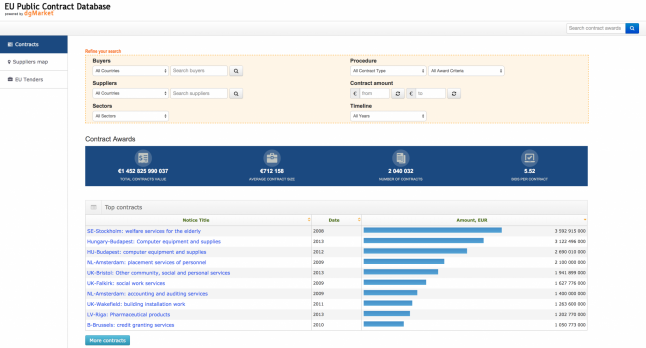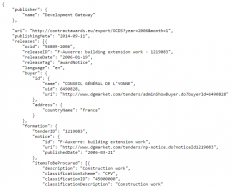
This is a modified version of a post originally published on Development Gateway’s blog.
What could you do with information on 2 million foreign aid contracts at your fingertips? We’re pleased to unveil a new dataset and visualization app from AidData partner Development Gateway. Read below to get the story about what’s in the data and how this came about.
Since 2003, Development Gateway’s dgMarket has aggregated tender notices, contract awards and bidding documents from national governments and development agencies. The first global e-procurement platform, dgMarket now lists over a million opportunities every year from 170 countries, representing around $1 trillion in government procurement.
Building upon this foundation, Development Gateway and other AidData partners became early supporters of the Open Contracting movement. In Nepal, we have worked with theOpen Aid Partnership to help government agencies adopt Open Contracting principles andconnect government contracts with foreign aid funding. Phase II of the effort is working to mainstream open contracting into national procurement systems. We’ll have more to say about that soon.
Now that the beta Open Contracting Data Standard (OCDS) is live, we’re test-driving it in a big way: sharing some of dgMarket’s vast store of contract awards in this format. This first OCDS dataset contains over 2 million European Union procurement awards since 2006, with over €1.45 trillion in contract funding represented. The average contract value is about €700K, and the average number of bidders for each opportunity is 5.5.
Here’s a sneak peak at the data in all of their OCDS glory:

If that screenshot scares you, check out Development Gateway’s EU contract award visualization app, which makes all of this data a lot more palatable and interactive:
OCDS datasets like this are just a first step toward realizing the broader Open Contracting vision and improving the way we spend public funds writ large. But we hope that better open contracting data integrated with granular aid data will help transparency champions to ensure that development dollars go where they are needed and accomplish as much good as possible.
We look forward to moving ahead with the Open Contracting movement, working toward a long-term goal of helping partner country governments implement open contracting principles and get more value from their aid, budget, and procurement data.
And to all the others out there who aggregate procurement information -- who’s next?